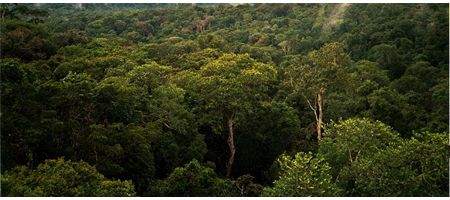Two ‘once-in-a-century’ droughts have hit the Amazon rainforest in just five years, scientists say, removing the region’s ability to act as a carbon sink.

The 2010 Amazon drought now looks to have been even more devastating than 2005’s. And the UK-Brazilian team behind the research calculates that the carbon impact of the 2010 drought may also exceed the five billion tonnes of CO2 released following the 2005 event.
To put this in context, the US emitted 5.4 billion tonnes of CO2 from fossil fuel use in 2009.
The authors suggest that if extreme droughts like these become more frequent, the days of the Amazon rainforest acting as a natural buffer to man-made carbon emissions may be numbered.
Lead author Dr Simon Lewis, from the University of Leeds, said: “Having two events of this magnitude in such close succession is extremely unusual, but is unfortunately consistent with those climate models that project a grim future for Amazonia.”
In a normal year intact forests absorb approximately 1.5 billion tonnes of CO2.1 This counter-balances the emissions from deforestation, logging and fire across the Amazon and has helped slow down climate change in recent decades.
But in 2005, the region was struck by a rare drought which killed trees within the rainforest. Monitoring showed that these forests stopped absorbing CO2 from the atmosphere, and as the dead trees rotted they released CO2 instead.
The drought was described at the time as a ‘one-in-100-year event’.
The new research used the known relationship between drought intensity in 2005 and tree deaths to estimate the impact of the 2010 drought.
It indicates that Amazon forests will not absorb their usual 1.5 billion tonnes of CO2 from the atmosphere in both 2010 and 2011, and that a further five billion tonnes will be released over the coming years once the trees that have been killed by the drought rot.
“Our results should be seen as an initial estimate,” says Dr Paulo Brando, from Brazil’s Amazon Environmental Research Institute.
“The emissions estimates do not include those from forest fires, which spread over extensive areas of the Amazon during hot and dry years. These fires release large amounts of carbon to the atmosphere.”
Some global climate models suggest that Amazon droughts like these will become more frequent in future as a result of greenhouse gas emissions.
“If greenhouse gas emissions contribute to Amazon droughts that in turn cause forests to release carbon, this feedback loop would be extremely concerning,” says Lewis. “Put more starkly, current emissions pathways risk playing Russian roulette with the world’s largest rainforest.”






